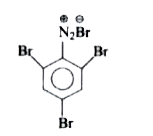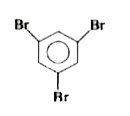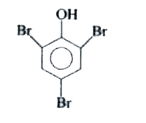The end product of oxidative phosphorylation is
NADH
Oxygen
ADP
The correct Answer is:d
Step-by-Step Solution:
1. Understanding Oxidative Phosphorylation:
- Oxidative phosphorylation is a metabolic process that occurs in the mitochondria, where energy from the oxidation of nutrients is used to produce ATP. It involves the electron transport chain and chemiosmosis.
2. Role of NADH and FADH2:
- NADH and FADH2 are electron carriers that donate electrons to the electron transport chain. Their oxidation leads to the production of ATP.
3. Electron Transport Chain (ETC):
- The electron transport chain is a series of protein complexes located in the inner mitochondrial membrane. As electrons pass through these complexes, energy is released, which is used to pump protons (H+) into the intermembrane space, creating a proton gradient.
4. Formation of ATP:
- The protons flow back into the mitochondrial matrix through ATP synthase, a process known as chemiosmosis. This flow of protons drives the conversion of ADP and inorganic phosphate (Pi) into ATP.
5. Final Electron Acceptor:
- Oxygen acts as the final electron acceptor in the electron transport chain. It combines with electrons and protons to form water (H2O).
6. End Products of Oxidative Phosphorylation:
- The main products of oxidative phosphorylation are ATP and water. Therefore, the end product of oxidative phosphorylation is ATP and water.
Final Answer: The end product of oxidative phosphorylation is ATP and water.
---
- Oxidative phosphorylation is a metabolic process that occurs in the mitochondria, where energy from the oxidation of nutrients is used to produce ATP. It involves the electron transport chain and chemiosmosis.
- NADH and FADH2 are electron carriers that donate electrons to the electron transport chain. Their oxidation leads to the production of ATP.
- The electron transport chain is a series of protein complexes located in the inner mitochondrial membrane. As electrons pass through these complexes, energy is released, which is used to pump protons (H+) into the intermembrane space, creating a proton gradient.
- The protons flow back into the mitochondrial matrix through ATP synthase, a process known as chemiosmosis. This flow of protons drives the conversion of ADP and inorganic phosphate (Pi) into ATP.
- Oxygen acts as the final electron acceptor in the electron transport chain. It combines with electrons and protons to form water (H2O).
- The main products of oxidative phosphorylation are ATP and water. Therefore, the end product of oxidative phosphorylation is ATP and water.
Topper's Solved these Questions
- NCERT Exemplar Questions +1 (PLANT KINGDOM)BOOK - TRUEMEN BIOLOGY ENGLISHCHAPTER - NCERT Exemplar Questions +1 (PLANT KINGDOM)EXERCISE - MCQs
10 Videos
- NCERT Exemplar Questions +1 (STRUCTURAL ORGANISATION IN ANIMALS )BOOK - TRUEMEN BIOLOGY ENGLISHCHAPTER - NCERT Exemplar Questions +1 (STRUCTURAL ORGANISATION IN ANIMALS )EXERCISE - MCQs
8 Videos
Similar Questions
Knowledge Check

The end product Y is :A B
B C
C D
D
Oxidative phosphorylation is done by
View SolutionOxidative phosphorylation refers to
View SolutionThe process of oxidative phosphorylation takes place in
View SolutionWhat is oxidative phosphorylation?
View SolutionWhat is oxidative phosphorylation?
View SolutionWhat is oxidative phosphorylation?
View SolutionWhat is oxidative phosphorylation?
View Solution

